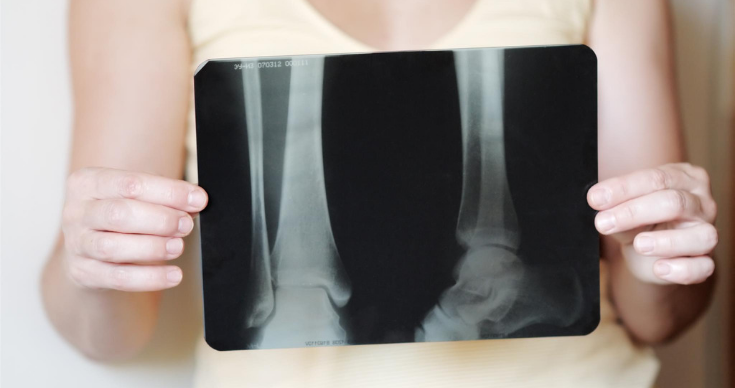Why Women Are More Prone To Osteoporosis
There are many factors that make an individual susceptible to any particular disease. Often such factors can be smoking, drinking alcohol, aging, having some underlying illness and so on. As per many orthopedic experts, women are more susceptible than men, when it comes to osteoporosis. Let’s find out the reasons why women are more likely to have osteoporosis than men.
Osteoporosis is an orthopedic condition in which the bone becomes porous. As a result, eventually, it leads towards making them weak and brittle. It can easily lead to a fracture even due minor to mild trauma or accident.
There are mainly 2 reasons for women being more susceptible to have osteoporosis.
Bone Structure
Osteoporosis often happens due to certain factors that are prominent during childhood and adolescence. Women reach their peak of bone mass growth around age 18, for men it continues to grow around the age of 20. Moreover, women have smaller bone structure as compared to men, as a result, their bone mass density is lower than that of men. These factors make women more susceptible to have orthopedic conditions.
Role Of Estrogen
The female hormone, estrogen is the main reason for the likelihood of osteoporosis in women. Estrogen keeps the fertility cycles in check. Simultaneously, it also keeps the bones healthy and strong and things work well until the time of menopause. After menopause, the hormonal level drops significantly and act as a big factor to cause low bone density.
The reason being, women keep on losing bone density after menopause. In fact, as per gynecologists, women who have menopause at a younger age are at even more risk of the same. In contrast, women having their cycles at an earlier age or the ones using contraceptive (with estrogen) often have healthier bone mass.
Moreover, having irregular periods or start having them at a much later age are also some reasons for lower bone mass than others. Apart from these, having the ovaries removed can also cause lower bone mass.
Thus it can be concluded that women are at higher risk of developing osteoporosis and often other orthopedic conditions as well. As per studies, it has been found that one out of every 2 women above the age of 50 is likely to have osteoporosis. However, that does not mean, nothing can be done to address it. Regular exercise, intaking adequate vitamin D and calcium are highly beneficial to ensure a strong bone build-up. Osteoporosis is a disease that requires timely treatment to make sure it does not result in any severe complication.
At ILS Hospitals, we offer excellent orthopedic treatment and care for people who are enduring pain and discomfort for years. It’s time to address them effectively and lead a much healthier life ahead.
Bone Health and Osteoporosis
Osteoporosis is a growing global problem worldwide. After the age of 50, bones become weak and fragile especially in case of women. Fractures affect both men and women with age. Strong bones are essential for overall good health. Good nutrition helps in keeping the bones stronger and healthier.
Although, there are hardly any symptoms of detecting osteoporosis at an early stage. Some earlier signs might include receding gums, weak nails, and weakened grip strength. Without a proper treatment, osteoporosis may worsen leading to the higher risk of fractures. Some common causes of osteoporosis are mentioned below:
- Physical inactivity
- Smoking
- Low body weight
- Certain medications
- Hereditary
- Being female and an older adult
- Poor nutrition
- Menopause in case of women

There are many factors which play an important role in keeping the bones healthy. Some of them are as follows:
Bone contains 99% of body calcium and therefore we need to consume foods high in calcium to keep it healthy.
- Vitamin D is needed to absorb calcium and build bones.
- Enough Protein intake is essential to maintain a healthy bone.
- Other nutrients include zinc, Vitamin K, and magnesium.
- Weight-bearing exercises such as climbing stairs, push-ups etc. should be included in the everyday routine.
- Smoking should be stopped.
Apart from these, there are some natural ways to treat bone disease but should be strictly followed under your doctor’s supervision. Some people do get good results with natural treatments.
Osteoporosis can have serious effects. As already mentioned, fractures can be really painful and take a long time to heal leading to other complications. For instance, a hip fracture requires staying in bed for a longer period with other risks involved like pneumonia, blood clots, and other infections.

BMD (Bone Mineral Density) is a type of scan to diagnose the disease. It is done by using a type of X-ray known as a dual-energy x-ray(DEXA) and bone densitometry. DEXA scan includes two devises – a central device which is a hospital-based scan measuring hip and spine bone and a peripheral device which is a mobile machine measuring wrist, heel and finger bone. ILS Hospitals being a multi-specialty hospital provides the treatment for Osteoporosis.
World Osteoporosis Day takes place on 20th October, organized by International Osteoporosis Foundation (IOF) every year. This concept is launched by the United Kingdom’s National Osteoporosis Society in the year 1996. The main aim of this campaign is to spread awareness on bone health. This annual campaign is dedicated to raising awareness of the prevention, diagnosis, and treatment of osteoporosis and metabolic bone disease.












